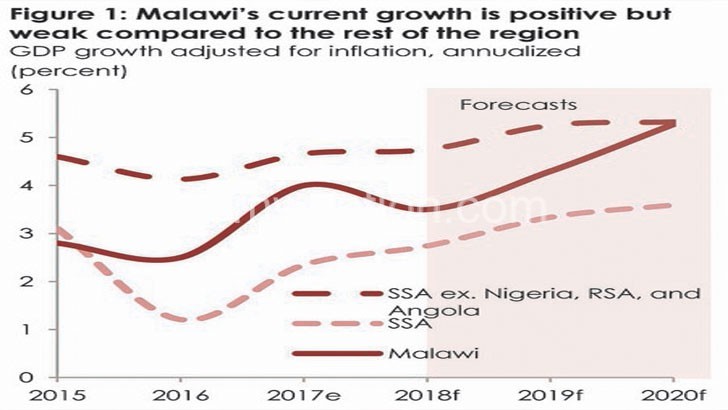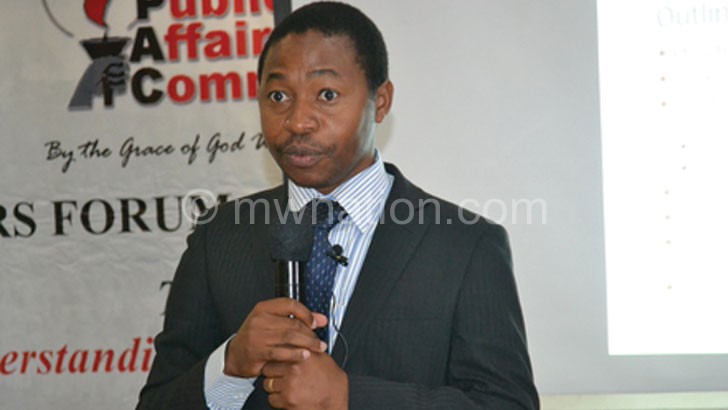Bank says growth positive but weak
Despite making strides economically, the World Bank says Malawi’s current growth is positive but weak compared to the rest of the sub-Saharan Africa region.
In its 8th edition of the Malawi Economic Monitor (MEM) titled Investing in Girls’ Education to be launched today in Lilongwe, the World Bank says Malawi needs to sustain significantly higher rates of growth to improve its development prospects, including through increased investment
The bank observes that investment in Malawi has been low, mainly due to both the significant macroeconomic instability resulting from the government’s inability to manage shocks and several policy-induced shocks.
“This is compounded by structural constraints, including limited and erratic energy supply and a generally non-conducive business environment. In the past two decades, Malawi’s real GDP [gross domestic product] per capita has grown at an average of 1.5 percent, significantly lower than the average rate of 3.1 percent in non-resource-rich Sub-Saharan Africa [SSA] economies.
“It remains an outlier even compared to
geographically and demographically similar peers that were at a similar stage of development in the mid-1990s. With Malawi’s low and episodic growth spells and with recurrent bouts of volatility, its progress towards poverty reduction has been poor,” reads the report in part.
Over the next two years, Malawi’s growth rate is projected to gradually increase to around 4-5 percent to be driven by a rebound in the agriculture sector, although this outlook is susceptible to downward risks such as a potential El Niño-induced weather shock, according to the bank.
In 2018, the average growth rate for Sub-Saharan Africa is expected to reach 2.7 percent, higher than the rate of 2.3 percent recorded in 2017, but lower than originally projected.
This is, however, contrary to what Finance, Economic Planning and Development Minister Goodall Gondwe earlier said that despite missing out on growth projections in recent years, Gondwe said Malawi’s growth rate remains the best in the Southern Africa region.
Government annual economic reports from 2011 to 2017 indicate that in the seven-year period, Treasury had been revising downwards growth projections, with the years 2013 to 2014 having positive revisions.
The Ministry of Finance, Economic Planning and Development earlier this year also revised downwards 2017 and 2018 growth projections, to an average of four and 4.5 percent, respectively, from the initial 6.4 percent and six percent, respectively.
Economists have long argued that the current social-political environment is one of the contributing factors to slow progress the country is making in its quest to graduate into a middle income country.





